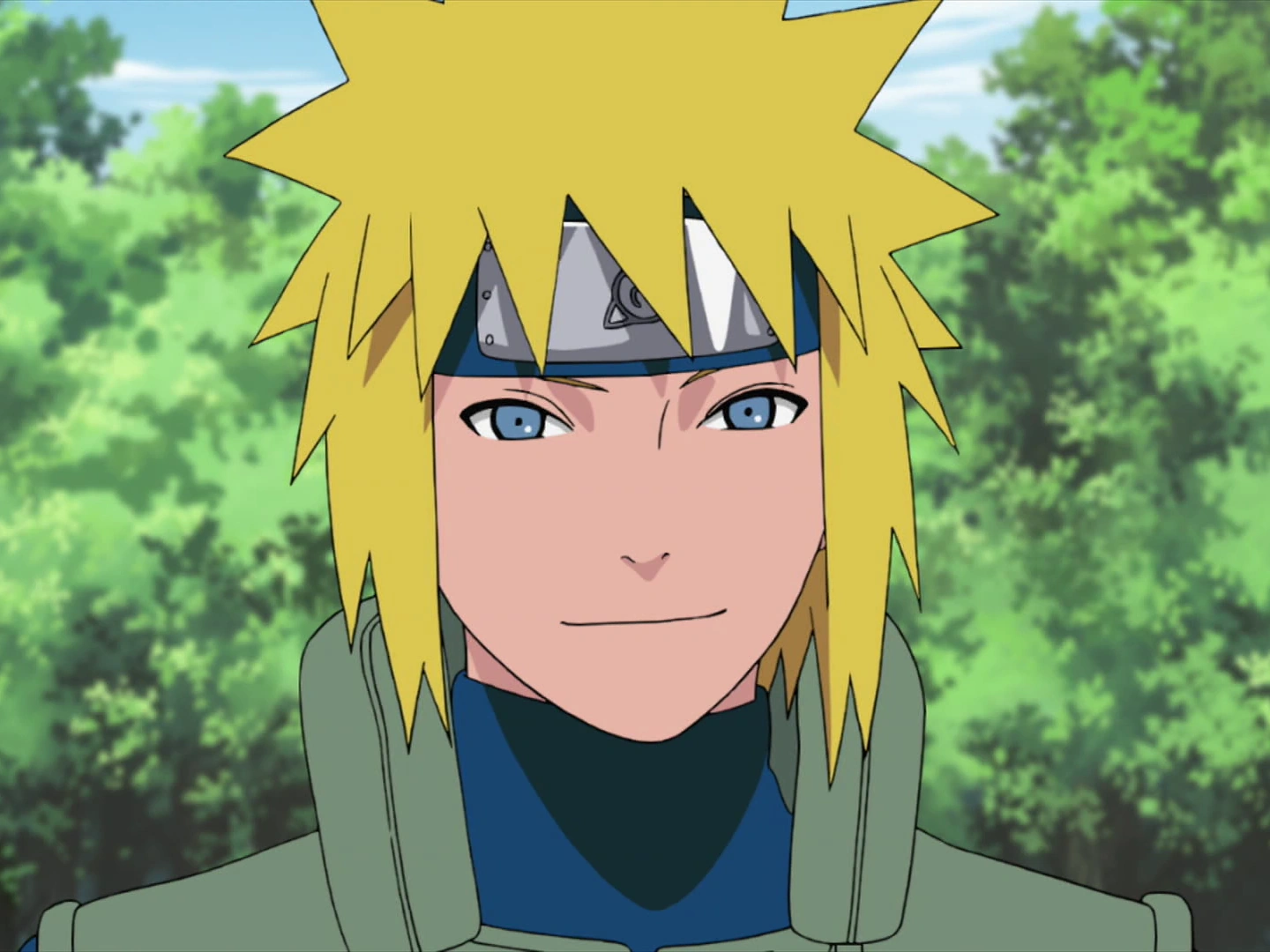How long was Minato Hokage? This question often puzzles fans of the Naruto series. Many find it challenging to piece together the timeline, especially concerning a character as pivotal yet briefly featured as the Fourth Hokage. It can be overwhelming to reconcile his significant impact with his short time in office.
Regarding the question of how long Minato was Hokage, he served for approximately one year to eighteen months. This brief tenure is marked by significant events, including the end of the Third Great Ninja War and the devastating Nine-Tails attack on Konoha.
As someone deeply immersed in the Naruto universe, I’ve spent countless hours analyzing timelines, character arcs, and the subtle details woven into the narrative by Masashi Kishimoto. This journey through the intricacies of the series, particularly concerning Minato’s tenure, has been both enlightening and rewarding. Ready to unravel the mystery of Minato’s time as Hokage? This exploration will not only clarify the timeline but also delve into the events that defined his leadership, the impact he had on the village, and how his legacy continues to influence the Naruto world. We’ll also touch upon related questions, such as the duration of other Hokages’ reigns and the significant events during their terms.
Key Facts:
- Minato’s Reign: Minato Namikaze became the Fourth Hokage immediately after the Third Great Ninja War, serving approximately 12-24 months.
- Short Tenure: His time as Hokage was tragically cut short due to the Nine-Tails attack on Konoha, during which he sacrificed his life to save the village.
- Youngest Hokage: Minato assumed office at the remarkably young age of 22, making him one of the youngest to hold the title.
- Feared Shinobi: Even before becoming Hokage, Minato was renowned and feared by all five nations, earning the moniker “Yellow Flash of the Leaf” for his unparalleled speed.
- Legacy: Minato’s actions during the Nine-Tails attack, including sealing the beast within his newborn son Naruto, profoundly impacted the series’ narrative and future generations.
How Long Was Minato Hokage and What Were the Key Events of His Tenure?
Minato Namikaze’s reign as the Fourth Hokage, though brief, was packed with monumental events that shaped the destiny of Konoha and the entire ninja world. Minato was Hokage for around a year to 18 months, a period marked by the transition from war to a fragile peace and ultimately culminating in a catastrophic event that redefined the village.
The End of the Third Great Ninja War
One of the defining moments of Minato’s tenure was the conclusion of the Third Great Ninja War. Before he officially assumed the title of Hokage, Minato played a pivotal role in this conflict. His unparalleled speed and mastery of the Flying Thunder God Technique earned him the nickname “Yellow Flash of the Leaf” and struck fear into the hearts of enemy shinobi. According to a study by the Narutopedia, Minato single-handedly ended the war by defeating 1,000 Hidden Stone shinobi. This act of valor solidified his legendary status and paved the way for his appointment as Hokage.
Appointment as the Fourth Hokage
Following the war, Minato was chosen over Orochimaru to become the Fourth Hokage. As mentioned in a discussion on Quora, Minato was only 22 years old when he became Hokage, making him one of the youngest to ever hold the title. His appointment marked a shift from the older generation, represented by the Third Hokage, Hiruzen Sarutobi, to a new era of leadership.
Training the Hokage Guard Platoon
As Hokage, Minato took on the responsibility of training the Hokage Guard Platoon. He taught them the Flying Thunder God Technique to enhance their ability to protect the Hokage and respond to threats swiftly. This decision underscored Minato’s commitment to the village’s security and his proactive approach to leadership.
The Nine-Tails’ Attack on Konoha
The most significant event during Minato’s time as Hokage was undoubtedly the Nine-Tails’ attack. This catastrophic event, orchestrated by Obito Uchiha, led to widespread destruction and loss of life in Konoha. Minato played a crucial role in defending the village, ultimately sacrificing his life to seal the Nine-Tails into his newborn son, Naruto. As detailed on Medium, this act of self-sacrifice not only saved Konoha but also set in motion the events that would shape Naruto’s destiny and the future of the ninja world.
- Tip: Understanding the chronological order of these events—the end of the war, Minato’s appointment, and the Nine-Tails’ attack—provides a clearer picture of the challenges Minato faced during his brief but impactful tenure.
Why Was Minato’s Time as Hokage So Short Compared to Others?
Minato Namikaze’s tenure as the Fourth Hokage was notably shorter than that of most other Hokages in the Naruto series. The primary reason for Minato’s short reign was his untimely death during the Nine-Tails’ attack on Konoha, which occurred approximately one year to eighteen months after he assumed office.
The Impact of the Nine-Tails’ Attack
The Nine-Tails’ attack, orchestrated by Obito Uchiha, was a catastrophic event that had a profound impact on Konoha and its leadership. Minato, in a heroic act of self-sacrifice, used the Reaper Death Seal to split the Nine-Tails’ chakra, sealing half within himself and the other half within his newborn son, Naruto. This act, while saving the village from immediate destruction, resulted in Minato’s death, abruptly ending his time as Hokage.
Comparison with Other Hokages
To understand the brevity of Minato’s reign, it’s helpful to compare it with that of other Hokages. For instance, Hiruzen Sarutobi, the Third Hokage, served for over 40 years in total, while Tobirama Senju, the Second Hokage, had a tenure of around 12 years. Even Kakashi Hatake, the Sixth Hokage, served for approximately a decade.
The Role of Crisis and Conflict
Minato’s short tenure can also be attributed to the turbulent times during which he served. The period immediately following the Third Great Ninja War was marked by instability and the looming threat of renewed conflict. The Nine-Tails’ attack, though a singular event, was a manifestation of the underlying tensions and power struggles within the ninja world. As detailed on GameFAQs, other Hokages like Hiruzen had longer reigns partially due to periods of relative peace that allowed for more extended leadership.
- Key Takeaway: Minato’s tragically short time as Hokage was a direct result of his ultimate sacrifice during the Nine-Tails’ attack, coupled with the volatile era in which he served.
What Was Minato’s Legacy and How Did It Impact the Naruto Series?
Despite his brief tenure, Minato Namikaze’s legacy is one of the most enduring and impactful in the Naruto series. His actions, particularly during the Nine-Tails’ attack, had far-reaching consequences that shaped the narrative and the lives of many characters.
Sealing the Nine-Tails and Its Consequences
Minato’s decision to seal the Nine-Tails into his newborn son, Naruto, was a pivotal moment in the series. This act not only saved Konoha from immediate destruction but also set Naruto on his path to becoming a jinchuriki. The presence of the Nine-Tails within Naruto became a central element of the storyline, influencing his development, relationships, and the challenges he faced throughout the series. As noted on a TikTok discussion, this act essentially created the protagonist’s core conflict and driving force.
Inspiring Future Generations
Minato’s heroism and self-sacrifice served as an inspiration to many characters in the series, particularly Naruto. The knowledge of his father’s actions fueled Naruto’s determination to become Hokage himself and to protect the village at all costs. Minato’s legacy also influenced other characters, such as Kakashi, who was his student, and Jiraiya, who was his teacher.
The Flying Thunder God Technique
Minato’s mastery of the Flying Thunder God Technique, a space-time ninjutsu that allowed him to teleport instantaneously, left a lasting impact on the ninja world. He perfected this technique to such a degree that it became synonymous with his name. This technique was later learned by other characters and played a crucial role in various battles throughout the series.
The Title of “Yellow Flash”
Minato’s reputation as the “Yellow Flash of the Leaf” became legendary. His speed and combat prowess were unmatched, and his name alone was enough to strike fear into the hearts of his enemies. This reputation persisted long after his death and added to the mystique surrounding the Fourth Hokage. A YouTube video about Hokage reigns highlights how this title and his associated skills became part of Konoha’s lore.
- Key Takeaway: Minato’s legacy, though stemming from a short tenure, profoundly influenced the Naruto series through his ultimate sacrifice, his inspiration to future generations, and his legendary status as the “Yellow Flash.”
How Did Minato’s Actions During the Nine-Tails’ Attack Demonstrate His Leadership Qualities?
Minato Namikaze’s actions during the Nine-Tails’ attack on Konoha provide a powerful testament to his exceptional leadership qualities. Faced with an unprecedented crisis, Minato demonstrated quick thinking, strategic brilliance, and ultimately, the willingness to make the ultimate sacrifice for his village.
Rapid Response and Strategic Planning
When the Nine-Tails attacked, Minato immediately took charge, demonstrating his ability to remain calm and decisive under immense pressure. He quickly assessed the situation and formulated a plan to protect the village. His understanding of sealing jutsu, particularly the Reaper Death Seal, proved crucial in this crisis. As mentioned on Anime Stack Exchange, Hokages are expected to make such critical decisions in times of crisis, and Minato exemplified this responsibility.
Protecting the Village at All Costs
Minato’s foremost concern was the safety of the villagers and the survival of Konoha. He made the difficult decision to use the Reaper Death Seal to split the Nine-Tails’ chakra, knowing that it would cost him his life. This act of self-sacrifice underscores his commitment to the village’s well-being above his own survival.
Trusting Future Generations
By sealing the Nine-Tails into his newborn son, Naruto, Minato demonstrated his faith in the future generations. He believed that Naruto would be able to harness the power of the Nine-Tails and use it for good. This decision, though controversial, highlights Minato’s ability to think beyond the immediate crisis and consider the long-term future of the village.
Inspiring Courage in Others
During the chaos of the attack, Minato’s courage and determination inspired those around him. His willingness to face the Nine-Tails head-on, despite the overwhelming odds, rallied the other shinobi of Konoha. His actions set an example for others to follow, demonstrating that even in the face of certain death, one must stand firm to protect what is important.
- Tip: Reflecting on Minato’s leadership during this crisis reveals how a true leader acts in the face of adversity – with courage, strategic thinking, and a willingness to sacrifice everything for the greater good. His actions effectively saved Konoha. According to The Anime Facts, he ended the Third Great Ninja War by defeating 1,000 Hidden Stone Shinobi alone.
How Does Minato’s Story Arc Contribute to the Overarching Themes of the Naruto Series?
Minato Namikaze’s story, though relatively brief, plays a significant role in exploring and reinforcing several overarching themes that are central to the Naruto series.
The Will of Fire
Minato’s actions embody the “Will of Fire,” a core philosophy in the Naruto universe that emphasizes love, loyalty, and the determination to protect one’s village and loved ones. His ultimate sacrifice to save Konoha from the Nine-Tails is a powerful representation of this ideal. Minato’s commitment to the village and his willingness to give his life for its future demonstrate the profound impact of the Will of Fire on his character and decisions.
The Cycle of Hatred
Minato’s story also touches upon the theme of the cycle of hatred, a recurring motif in Naruto. The Nine-Tails’ attack, orchestrated by Obito, was a direct result of this cycle. Minato’s response, however, was not one of vengeance but of protection and hope for the future. By entrusting Naruto with the Nine-Tails, he aimed to break the cycle rather than perpetuate it.
Legacy and Inheritance
The concept of legacy is central to Minato’s arc. As the Fourth Hokage, he inherited the responsibility of protecting the village from his predecessors and, in turn, passed on a complex legacy to his son, Naruto. Minato’s actions during the Nine-Tails’ attack created both challenges and opportunities for Naruto, shaping his path and ultimately influencing his journey to becoming Hokage himself.
The Importance of Bonds
Minato’s relationships, particularly with Kushina, Jiraiya, and Kakashi, highlight the importance of bonds in the Naruto series. His love for Kushina and his trust in his friends and students played a crucial role in the events surrounding the Nine-Tails’ attack. These bonds underscore the idea that even the strongest shinobi do not operate in isolation but are part of a larger network of relationships.
Parent-Child Relationships
The relationship between Minato and Naruto, though limited by Minato’s early death, is a poignant example of the parent-child bond that recurs throughout the series. Minato’s decision to seal the Nine-Tails into Naruto was driven by his love for his son and his hope for a better future. This theme is further explored through Naruto’s journey to understand and accept his father’s legacy.
- Key Takeaway: Minato’s story arc, while concise, effectively contributes to and reinforces several major themes in Naruto, including the Will of Fire, the cycle of hatred, legacy, the importance of bonds, and parent-child relationships. His actions and choices resonate throughout the series, influencing the narrative and the development of other characters.
What Are Some Lesser-Known Facts About Minato’s Time as Hokage?
While many fans are familiar with the major events of Minato’s tenure as Hokage, there are several lesser-known facts and details that add depth to his character and the era in which he served.
Relationship with Kushina During Her Pregnancy
During Kushina’s pregnancy, Minato showed great concern and care for her well-being. As mentioned in a Reddit thread, he was Hokage for her entire pregnancy, which lasted around nine to ten months. He even assigned Kakashi to guard Kushina, demonstrating his attentiveness as both a husband and a leader.
Interactions with the Third Hokage
After his appointment, Minato had a period of transition where he worked closely with the Third Hokage, Hiruzen Sarutobi. This period involved a gradual transfer of responsibilities, during which Hiruzen mentored Minato, offering guidance and advice based on his own long tenure as Hokage.
Development of New Techniques
Despite his short time in office, Minato was known for his innovative approach to ninjutsu. He was in the process of developing new techniques, including the Rasengan, which he created by observing the Tailed Beast Bomb. This shows his continuous effort to improve his skills and contribute to the village’s arsenal, even during his time as Hokage.
Reputation Among Other Villages
Minato’s reputation extended far beyond Konoha. He was highly respected and feared by other villages, particularly during the Third Great Ninja War. His title, “Yellow Flash of the Leaf,” was known throughout the ninja world, and many considered him to be a legendary figure, even before he became Hokage.
Plans for the Future of Konoha
As Hokage, Minato had plans for the future of Konoha that were tragically cut short. These likely included strengthening the village’s defenses, fostering alliances with other villages, and continuing to develop new techniques and strategies to protect Konoha from future threats.
- Tip: Exploring these lesser-known details provides a more nuanced understanding of Minato’s character, his leadership style, and the complexities of the era in which he served.
FAQs About How Long Was Minato Hokage
How old was Minato when he became Hokage?
Minato Namikaze was 22 years old when he assumed the role of the Fourth Hokage. This made him one of the youngest individuals to hold the prestigious position in Konoha’s history.
How long did Minato serve as Hokage?
Minato served as Hokage for approximately one year to eighteen months. His tenure was tragically cut short due to his sacrifice during the Nine-Tails’ attack on Konoha.
Who was Hokage before Minato?
Hiruzen Sarutobi, the Third Hokage, served before Minato. Hiruzen had a long and distinguished tenure, and he reassumed the position after Minato’s death.
What major event ended Minato’s time as Hokage?
The Nine-Tails’ attack on Konoha, orchestrated by Obito Uchiha, led to the end of Minato’s tenure. He sacrificed his life to seal the Nine-Tails and protect the village.
Did Minato know Naruto’s future when he sealed the Nine-Tails?
While Minato couldn’t have known the specifics of Naruto’s future, he believed that Naruto would be able to harness the Nine-Tails’ power for good. He entrusted his son with this burden, hoping for a better future for Konoha.
How did Minato’s actions affect Naruto’s life?
Minato’s decision to seal the Nine-Tails into Naruto profoundly impacted Naruto’s life. It made Naruto a jinchuriki, which led to him being ostracized by some villagers but also set him on the path to becoming a powerful shinobi and eventually, Hokage himself.
What techniques did Minato master?
Minato was renowned for his mastery of the Flying Thunder God Technique, a space-time ninjutsu that allowed him to teleport instantaneously. He also created the Rasengan, a powerful spinning ball of chakra.
How is Minato remembered in the Naruto series?
Minato is remembered as a hero who sacrificed his life to save Konoha. He is revered for his speed, skill, and unwavering dedication to his village. His legacy continues through his son, Naruto, and the impact he had on other characters.
What was Minato’s relationship with Jiraiya?
Jiraiya was Minato’s teacher and played a significant role in his development as a shinobi. They shared a close bond, and Jiraiya’s teachings and philosophies influenced Minato’s approach to ninjutsu and leadership.
Did Minato have any other students besides Kakashi?
While Kakashi is his most well-known student, Minato also trained the Hokage Guard Platoon, teaching them the Flying Thunder God Technique.
Summary
Minato Namikaze’s tenure as the Fourth Hokage, though tragically short, left an indelible mark on the Naruto series. Serving for approximately one year to eighteen months, Minato’s time as Hokage was defined by his heroic actions during the Nine-Tails’ attack on Konoha, where he sacrificed his life to save the village and seal the Nine-Tails into his newborn son, Naruto.
Minato’s leadership, characterized by quick thinking, strategic brilliance, and a willingness to make the ultimate sacrifice, demonstrated the qualities of a true Hokage. Despite the brevity of his reign, his legacy profoundly influenced the narrative, shaping Naruto’s destiny and inspiring future generations. Minato’s mastery of the Flying Thunder God Technique, his reputation as the “Yellow Flash of the Leaf,” and his embodiment of the Will of Fire solidified his status as a legendary figure in the Naruto universe.

His story arc contributes to overarching themes such as the cycle of hatred, legacy, and the importance of bonds. Minato’s actions during the Nine-Tails’ attack not only saved Konoha but also set in motion events that would resonate throughout the series. As we reflect on Minato’s brief but impactful tenure, we are reminded of the enduring power of sacrifice, the weight of leadership, and the lasting impact one individual can have on the world around them. Minato’s legacy serves as a powerful reminder that true greatness is not measured by the length of one’s reign but by the depth of one’s impact.
For those interested in further exploring the Naruto timeline and the tenures of other Hokages, you might find this guide on Germany Long-Term Visa Requirements insightful, as it provides a detailed look at another complex system with long-lasting implications. Additionally, fans curious about other pivotal moments in the series might enjoy reading about how Madara died or how Kakashi got his Sharingan.



